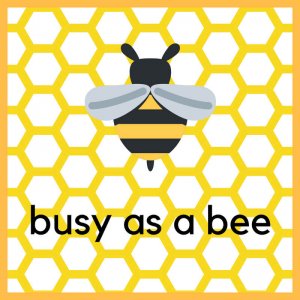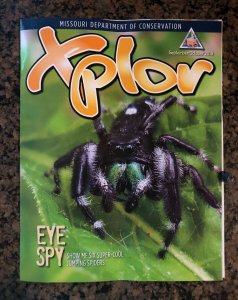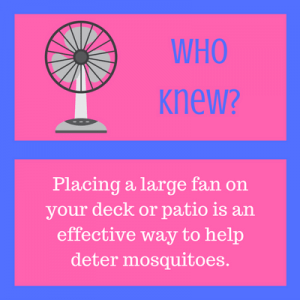
Have you ever been busy as a bee? Or does being over-scheduled make you mad as a hornet?

Have you ever been busy as a bee? Or does being over-scheduled make you mad as a hornet?
x
Look who made the cover of the Sept/Oct 2018 issue of Xplor! It’s the bold jumper, one of the many jumping spiders that live right here in Missouri. (And, yes, I did say JUMPING spiders. #Don’tPanic) They’re strong, fast, smart and (dare I say it?) some are even kind of cute!
Do you live in Missouri? Check.
Do you have kids? Check.
Do your kids like exploring nature? Check.
Do you want to encourage your kids to read? Check.
Do you like things that are completely free? Check.
Done! You need to get a subscription to this FREE bi-monthly magazine for kids that’s a publication from the Missouri Department of Conservation. This magazine reconnects kids to nature and helps them focus on finding adventure in their own backyards. This particular issue has a great story that highlights many of Missouri’s jumping spiders and allows you to get eyeball to eyeballs (yep, all 8 of them!) with these amazing arachnids. Check out this link to read this issue online or to get a free subscription sent to your child.
If you need assistance keeping your home spider free, call us today.

Question: How did Blue Chip get its start?
Answer: It all started in 1959 when James Phillips began Phillips Termite Control, treating primarily for termites in the Kirkwood and Webster Groves areas. He wasn’t a fan of spiders, ants and roaches…but then again who is? 🙂 Along came Scott, James’ son, who saw potential growth for the business when he recognized the need for general pest control in the entire St. Louis area. It wasn’t long before he added on residential and commercial pest control as well as expanded the service areas. In 1971, Blue Chip (now successfully offering both termite and general pest control services) was formally created.
Now, after more than 50 years in business, the third generation (Scott’s kids — Jeff Phillips & Kim Sieveking) have taken the reins of Blue Chip. Additional services have been added. More offices have been acquired. Numerous team members now make up this former one-man operation. Extensive training programs are in place. We’ve grown into one of the top 100 pest control companies in the entire United States. However, our dedication to customer service is just as strong today as a it was back in 1959.
Thank you for letting our family help your family!

“Nice to know that customer service is not a lost art.” These recent words from one of our customers (thanks Kevin!) made us stop and think. In this super fast-paced world we live in, it can sometimes seem like customer service is becoming a lost art as companies try to boost their sales and their customers are treated more like financial transactions. Anything to make a buck, right? WRONG! Dead wrong — at least when it comes to the level of customer service you’ll receive from Blue Chip.
We are a tight-knit family owned-business. Employees are family. Customers quickly become friends. Service visits turn into experiences. Promises are kept. A high priority is given to on-going training from some of the more renowned pest control experts in the country. Goals are set high. Response time is quick. Employee turnover is very low. Kindness and compassion are key. And laughter is always appreciated! 🙂
People remember how others make them feel. Our goal with customer service is always to keep a friendly & positive attitude while using the best of our knowledge to work together to help you solve and/or prevent pest and wildlife problems. If this is the kind of customer service you expect — well, it’s nice to meet you!
Cooler temperatures. Leaves changing colors. Football season. Pumpkin, well, pumpkin EVERYTHING! Yep, fall is in the air. As fall arrives, pests are smart enough to recognize the signs of winter approaching and will begin to search for shelter to protect themselves from the harsh winter elements that will soon arrive. Some pests, like stink bugs, ladybugs, cluster flies & box elder bugs, “overwinter” by choosing a shelter that’s warm and cozy and safe — just like your home or office.
These insects enter a structure for the winter months only. Pests that enter homes and businesses to overwinter during fall can often go unnoticed. When spring arrives, the re-emerge, become active & create even larger problems. Pest exclusion is our first and best line of defense for overwintering pests as well as an integral part of any true pest management program — including all of those we offer at Blue Chip.
Our service programs ensure that the entry points for these pests remain protected by treating them with a barrier of materials designed to kill them as they try to enter. Our technicians are always on the lookout for any voids, deficiencies and/or areas that need to be sealed off or fixed. Many times they’ll make a note of this on the report card that is emailed to our customers after each visit. Homeowners can help control the emergence of these overwintering pests by taking a few simple steps:
Fall is the perfect time to start thinking about how to ensure your home or office is protected from overwintering pests. Give us a call at 636-343-7900. We’re here to help YOU!

Armadillo is a Spanish word which means “little armored one.” This refers to the bony plates that cover the back, head, legs and tail of these odd-looking creatures. if you get close enough, you might see their pointy snout or itty bitty eyes. (Fun fact: Even though you could get close enough to one, you don’t want to. Armadillos carry the bacteria that’s associated with human leprosy. If humans can actually contact leprosy through interactions with infected armadillos is still debated; however, I’m betting you’re probably not interested in testing out that theory. #AmIRightOrAmIRight) Closely related to anteaters and sloths, these mammals can be known to sleep up to 16 hours a day. #WeekendGoals
Over the past couple of years, we’ve noticed armadillos moving into the St. Louis area. They moving from the south to the north & from the west to the east. While springtime is one of the more prevalent times of the year that they migrate, they have been seen year-round in our area. They usually travel in pairs or even small groups. The first signs you might notice that an armadillo has moved into your yard might be tracks in nearby dirt or mud. Armadillo tracks look like 3 long toe prints with a sharp claw on the tip. Their scaly tails drag behind them as they move and appear as a line drawn in the sand.
The most common damage caused by armadillos is divot holes they make in the ground with their strong feet and claws as they dig their burrows. The holes range in size but are typically from 1-3″ deep and 3-5″ wide. Their burrows can have openings of 7-8″ in length and be upwards of 15 feet in length underground. Here’s a picture of an armadillo burrow opening:

Live trapping is the only real way of controlling armadillos. Fencing around your property can help deter armadillos; however, they climb over fences and burrow underneath them. The only effective fencing would need to be installed at a 40-degree outward angle and be recessed into the ground at least 12 inches. You’d have to contact a specialized fence contractor for the fencing but Blue Chip does offer live trapping options if you do encounter an armadillo in your yard.


Back-To-School season is HERE! And although Target has had their back to school supplies out since, oh, practically the last day of school in May, it’s finally time to get on board with this.
Freshly sharpened pencils . (#2 pencils, of course!) Folders and binders in EVERY. SINGLE. COLOR! Rulers. Lunchboxes. Wide rule notebook paper. (Just say no to the skinny little lines on the college-ruled paper!) Dry erase markers. Bed bugs.
Wait…what? BED BUGS???
While bed bugs are certainly on nobody’s back-to-school supply list. they are definitely something to consider this time of year — especially if you are (or have!) a college-age student. Bed bugs thrive in colleges and universities which, with their confined spaces, provide the perfect environment for these little apple seed lookalike pests. As a matter of fact, nearly 50% of all pest control professionals have encountered cases of bed bugs on college campuses.
Early Monday morning math classes can seem like a nightmare to college students; however, a bed bug infestation can be just as icky. Here are some tips on how to avoid this real-life nightmare:
We’ve got some options and tips to help you out when it comes to bed bugs. As far as that pesky calculus test you’ve got bright and early next Monday morning? Well, you’re on your own with that one! #SorryNotSorry
Have you ever heard the expression “insects make my skin crawl?” Wellll…I hate to be the bearer of bad news; however, it turns out that this expression actually has some truth behind it. In 1943 some patients developed skin rashes immediately after letting cockroaches crawl all over their skin. (Exactly WHY the cockroaches were crawling on their skin is another story for another day! Note to self if that was my hospital: Find another hospital STAT!) When skin allergy testing became available roughly 16 years later, results of these tests confirmed these patients’ cockroach allergies. We’ve since learned that cockroach allergies are more than simply a skin rash reaction and can also serve as a trigger for acute asthma attacks.
Needless to say, cockroaches (as well as other household pests) definitely create concerns as well as negative consequences in the realm of public health. Certain proteins found in their feces, saliva and body parts can cause allergic reactions and trigger asthma. Just lovely, huh? The Asthma and Allergy Foundation of America (AAFA) estimates that somewhere between 78% and 98% of all urban homes have cockroaches. Allergists rank dust mites and cockroaches as Public Enemy #1 when it comes to household pests for people struggling with allergies and/or asthma. (Rodents rank second and stinging insects round out the top three.)
To combat symptoms of allergies and asthma attacks brought on by cockroaches & other household pests, two important steps must be taken. First and foremost, the person suffering should visit his/her doctor. Second, a regular pest program should be established to ensure that any potential problems and triggers are being eliminated. Give us a call at 636-343-7900 if you have any questions.
Mosquito season in St. Louis typically lasts until the end of September so we’re not quite in the clear yet. Still want to enjoy dinners on your deck, warm evenings in the pool or s’mores by the fire pit on those cooler fall evenings that are right around the corner? No problem! Try this easy tip to keep those end-of-the-season mosquitoes away before we bid them, and Summer 2018, a final farewell.
